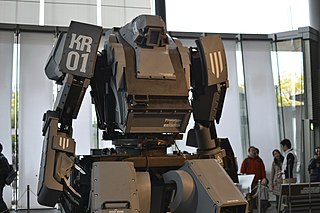
In science fiction, mecha or mechs are giant robots or machines typically depicted as piloted and as humanoid walking vehicles. The term was first used in Japanese after shortening the English loanword 'mechanism' or 'mechanical', but the meaning in Japanese is more inclusive, and 'robot' or 'giant robot' is the narrower term.
Gundam is a Japanese military science fiction media franchise. Created by Yoshiyuki Tomino and Sunrise, the franchise features giant robots, or mecha, with the name "Gundam". The franchise began on April 7, 1979, with Mobile Suit Gundam, a TV series that defined the "real robot" mecha anime genre by featuring giant robots called mobile suits in a militaristic setting. The popularity of the series and its merchandise spawned a franchise that includes 50 TV series, films and OVAs as well as manga, novels and video games, along with a whole industry of plastic model kits known as Gunpla which makes up 90 percent of the Japanese character plastic-model market.
Super Robot Wars, known in Japan as Super Robot Taisen, is a series of tactical role-playing video games produced by Bandai Namco Entertainment, formerly Banpresto. Starting out as a spinoff of the Compati Hero series, the main feature of the franchise is having a story that crosses over several popular mecha anime, manga and video games, allowing characters and mecha from different titles to team up or battle one another. The first game in the franchise was released for the Game Boy on April 20, 1991. Later spawning numerous games that were released on various consoles and handhelds. Due to the nature of crossover games and licensing involved, only a few games have been released outside Japan, and in English. The franchise celebrated its 25th anniversary in 2016, and its 30th anniversary in 2021.

Banpresto Co., Ltd. was a Japanese video game developer and publisher headquartered in Shinagawa, Tokyo. It had a branch in Hong Kong named Banpresto H.K., which was headquartered in the New Territories. Banpresto was a partly-owned subsidiary of toymaker Bandai from 1989 to 2006, and a wholly-owned subsidiary of Bandai Namco Holdings from 2006 to 2008. In addition to video games, Banpresto produced toys, keyrings, apparel, and plastic models.

Getter Robo is a Japanese mecha media franchise created by Ken Ishikawa and Go Nagai. An anime television series produced by Toei Animation was broadcast on Fuji TV from April 4, 1974, to May 8, 1975, with a total of 51 episodes. The manga was serialized in Shogakukan's Weekly Shōnen Sunday from April 7, 1974, to August 24, 1975, and was compiled in six volumes by Shogakukan and three volumes by Futabasha.
FromSoftware, Inc. is a Japanese video game development and publishing company. It was founded by Naotoshi Zin in Tokyo on November 1, 1986. Initially a developer of business software, the company released their first video game, King's Field, for the PlayStation in 1994. Its success shifted FromSoftware to focus fully on games, with them producing two more King's Field games before creating the mecha combat series Armored Core (1997), one of their flagship franchises.

Brain Powerd is a Japanese anime television series created by Sunrise. It was directed and written by Gundam creator Yoshiyuki Tomino and features mecha designs by Mamoru Nagano, character designs by Mutsumi Inomata, and music by Yoko Kanno. The 26 episodes of the series originally premiered on the satellite channel WOWOW between April and November 1998. The series was also aired across Japan on the anime network Animax, which also later broadcast the series across its respective networks worldwide, including its English language networks in Southeast Asia and South Asia. Animax aired Bandai Entertainment's localization, the series' English language television premiere. The anime series was licensed by Bandai and distributed across the region on DVD under the title Brain Powered.

Armored Core is a 1997 third-person shooter mecha video game developed by FromSoftware and published by Sony Computer Entertainment for the PlayStation. It was originally released in Japan by FromSoftware in July 1997 and in North America in October 1997 and Europe in 1998 by Sony Computer Entertainment. The game is the first entry in the Armored Core series. A digital port was released in 2007 in Japan and 2015 in North America on the PlayStation Network as a part of the PSone Classics line of games.

Another Century's Episode 2, abbreviated as A.C.E. 2, is a third-person mecha action video game produced by Banpresto and developed by From Software. It is the sequel to the popular 2005 game Another Century's Episode. It was released for the PlayStation 2 on March 30, 2006.
Metal Armor Dragonar is a 48-episode mecha anime series, created by Nippon Sunrise and aired from 1987 to 1988. Devised shortly after the release of Mobile Suit Gundam ZZ, Dragonar was intended to be both a "starter" series to get new fans into mecha anime, and a potential successor to the Gundam franchise. In fact, its concept is to be the renewal of the first Gundam; and the mecha are designed by Kunio Okawara, the mechanical designer for most of the Gundam series.

Super Robot Wars OG is a 2007 tactical role-playing game for the PlayStation 2. OG is a remake of the two Original Generation games for the Game Boy Advance and is intended to celebrate the Super Robot Wars series' 15th anniversary. It was released on June 28, 2007.

Super Robot Taisen: Original Generation is a tactical role-playing game for the Game Boy Advance. It was developed by Banpresoft and published by Banpresto in Japan, Atlus in North America, and 505 Games in Europe.
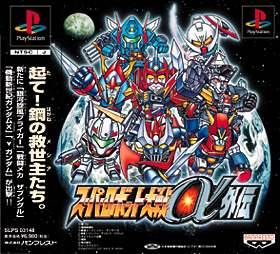
Super Robot Wars Alpha Gaiden, or simply, Alpha Gaiden, is a video game for the PlayStation, first released in Japan in 2001. It is the first side-story in the Super Robot Wars Alpha series, continuing from Super Robot Wars Alpha. The characters of After War Gundam X, Turn A Gundam, and Combat Mecha Xabungle make debut appearances in the game.

Super Robot Spirits is a 3D versus fighting game for the Nintendo 64, and a spinoff of the Super Robot Wars line of games. It was released only in Japan in 1998.

Super Robot Wars Original Generation: The Animation is a three-episode OVA that takes place after the events of Super Robot Taisen: Original Generation 2, a Game Boy Advance game featuring only original characters and mecha created by Banpresto for the Super Robot Wars franchise.
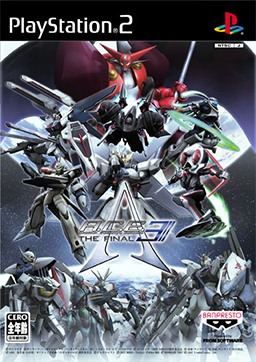
Another Century's Episode 3: The Final, abbreviated as "A.C.E.3", is a mecha action video game produced by Banpresto and developed by FromSoftware. It was released for the PlayStation 2 on September 6, 2007.
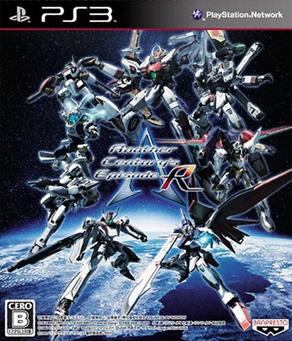
Another Century's Episode: R is a 2010 third-person shooter video game published by Namco Bandai Games in Japan for the PlayStation 3. It is the fourth entry in the Another Century's Episode series, following Another Century's Episode 3: The Final (2007). The player controls a mech from one of thirteen different anime robot franchises through a series of missions, ranging from destroying enemy machines to protecting a specific target.

Another Century's Episode Portable is a mecha action video game developed by FromSoftware and published by Namco Bandai Games. It was released for the PlayStation Portable on January 13, 2011.
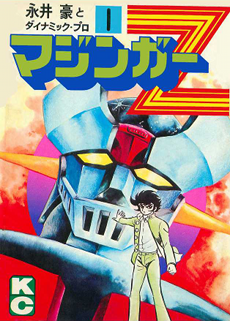
Mazinger Z is a Japanese super robot manga written and illustrated by Go Nagai. It was originally serialized in Shueisha's Weekly Shōnen Jump from October 1972 to August 1973, and it later was reissued in Kodansha TV Magazine from October 1973 to September 1974.
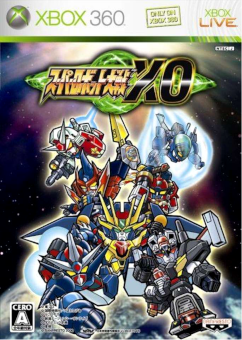
Super Robot Wars XO is a 2006 tactical role-playing video game developed and published by Banpresto for the Xbox 360 in Japan. Part of the company's Super Robot Wars series, it is an updated version of the GameCube installment Super Robot Wars GC (2004). Players control a fleet of mechas from a variety of super robot anime series, including Mobile Suit Gundam and Getter Robo, to defeat opponents on a grid-based map. XO combines tactical role-playing game mechanics with action sequences, which use stylized anime-esque cutscenes unique for each character.

















